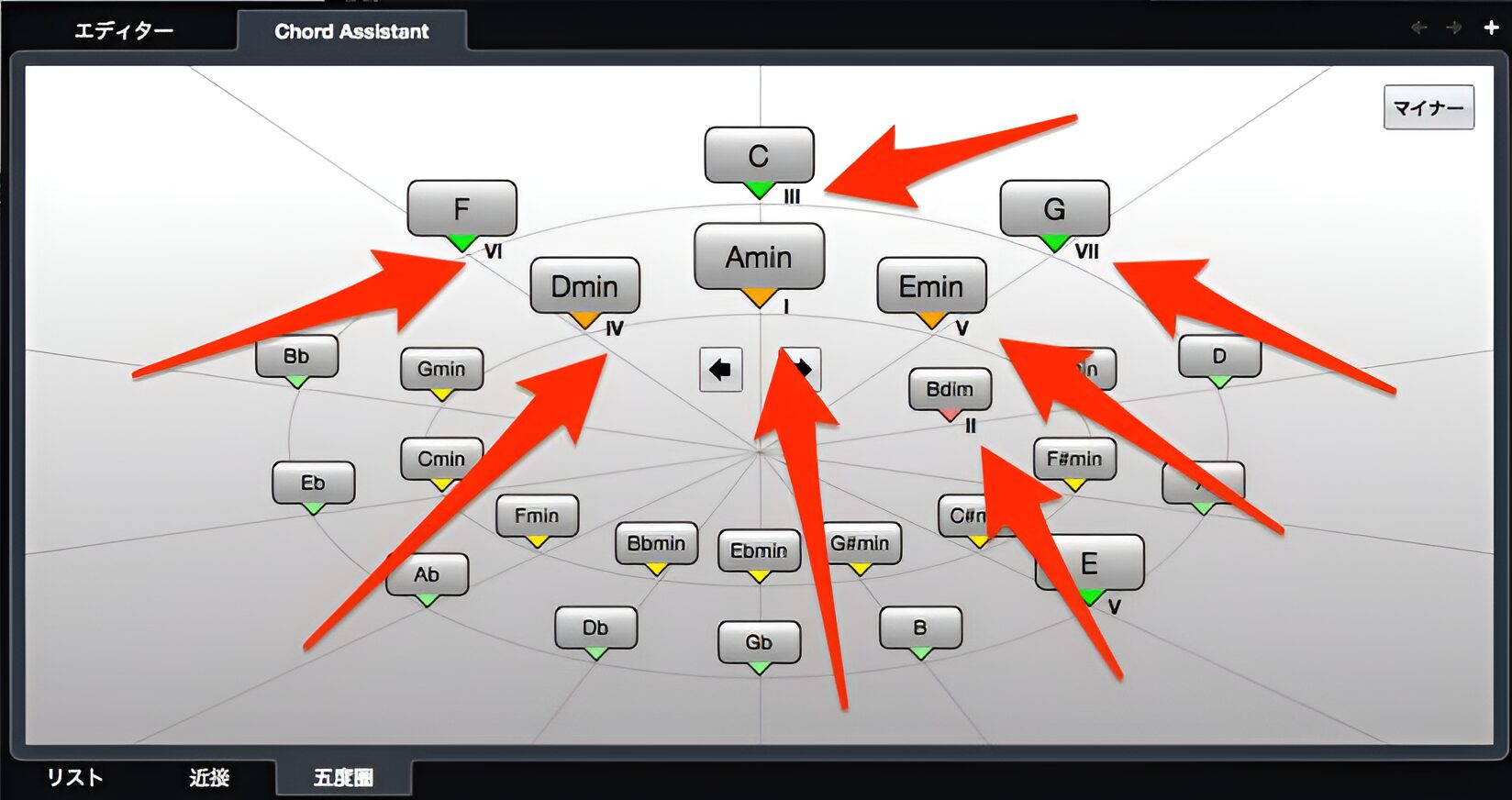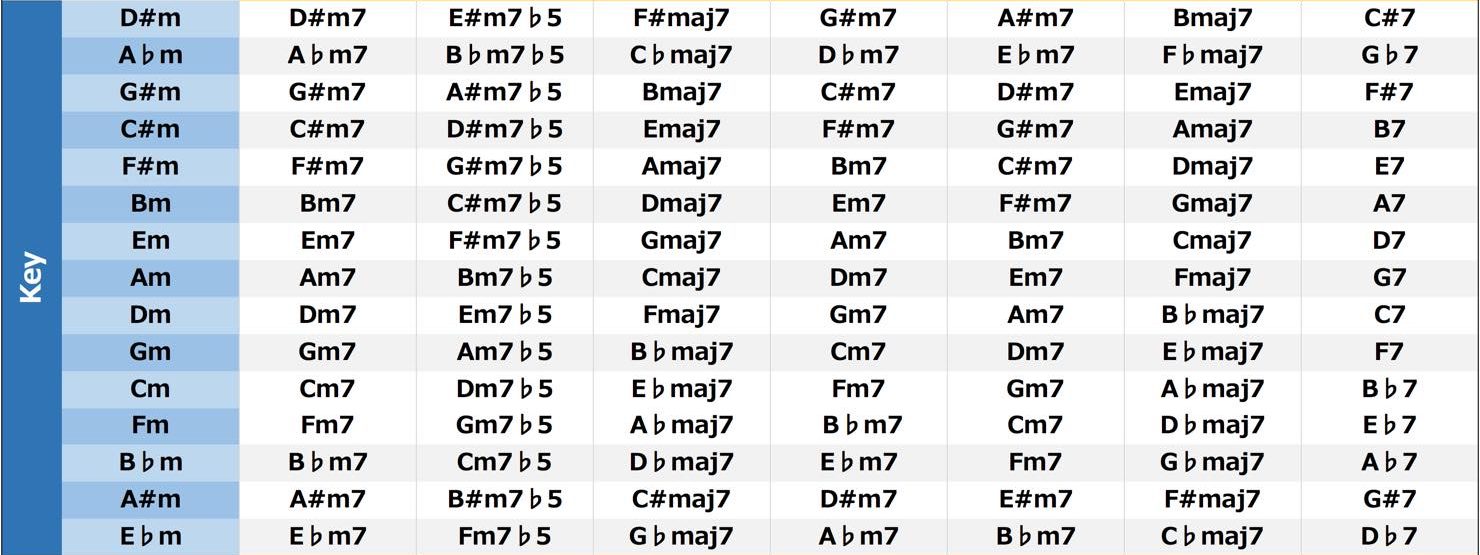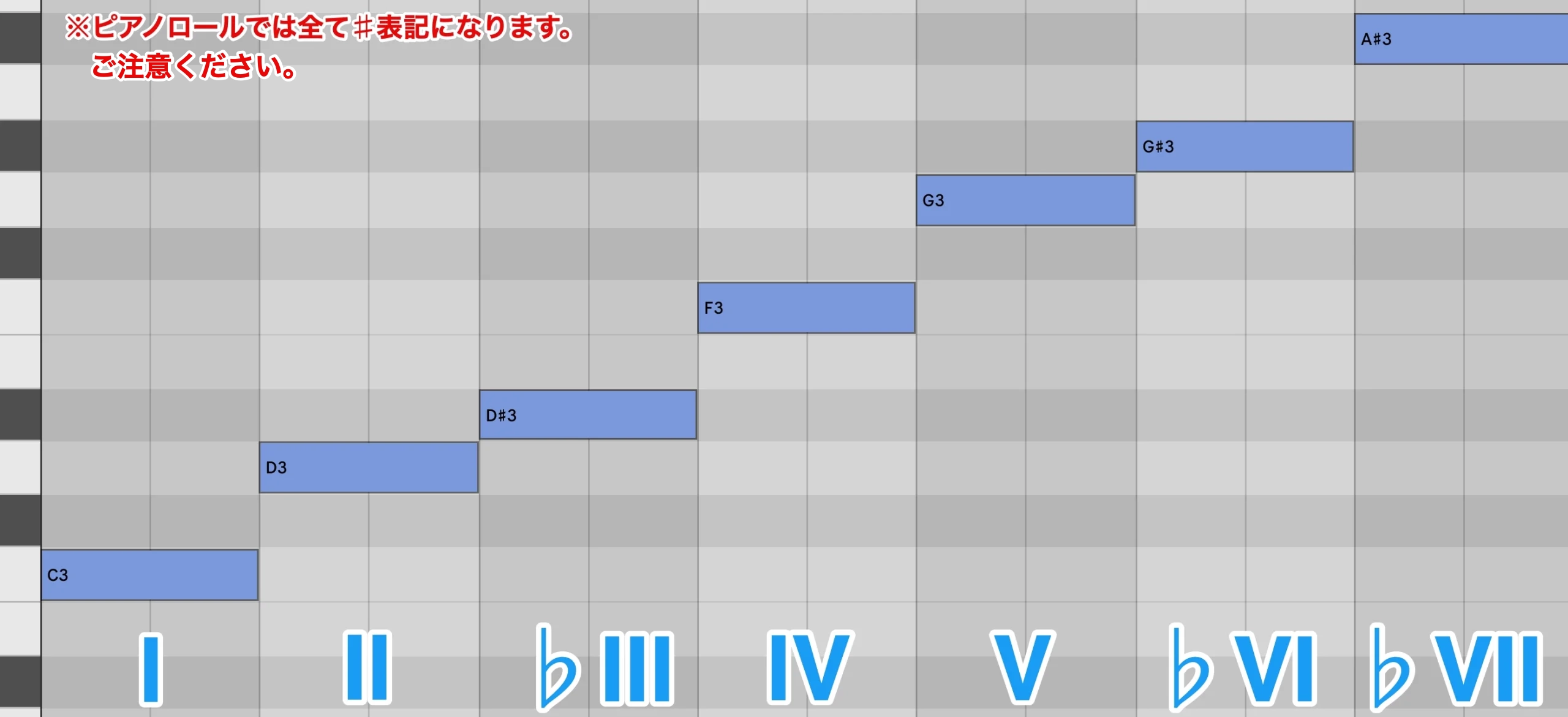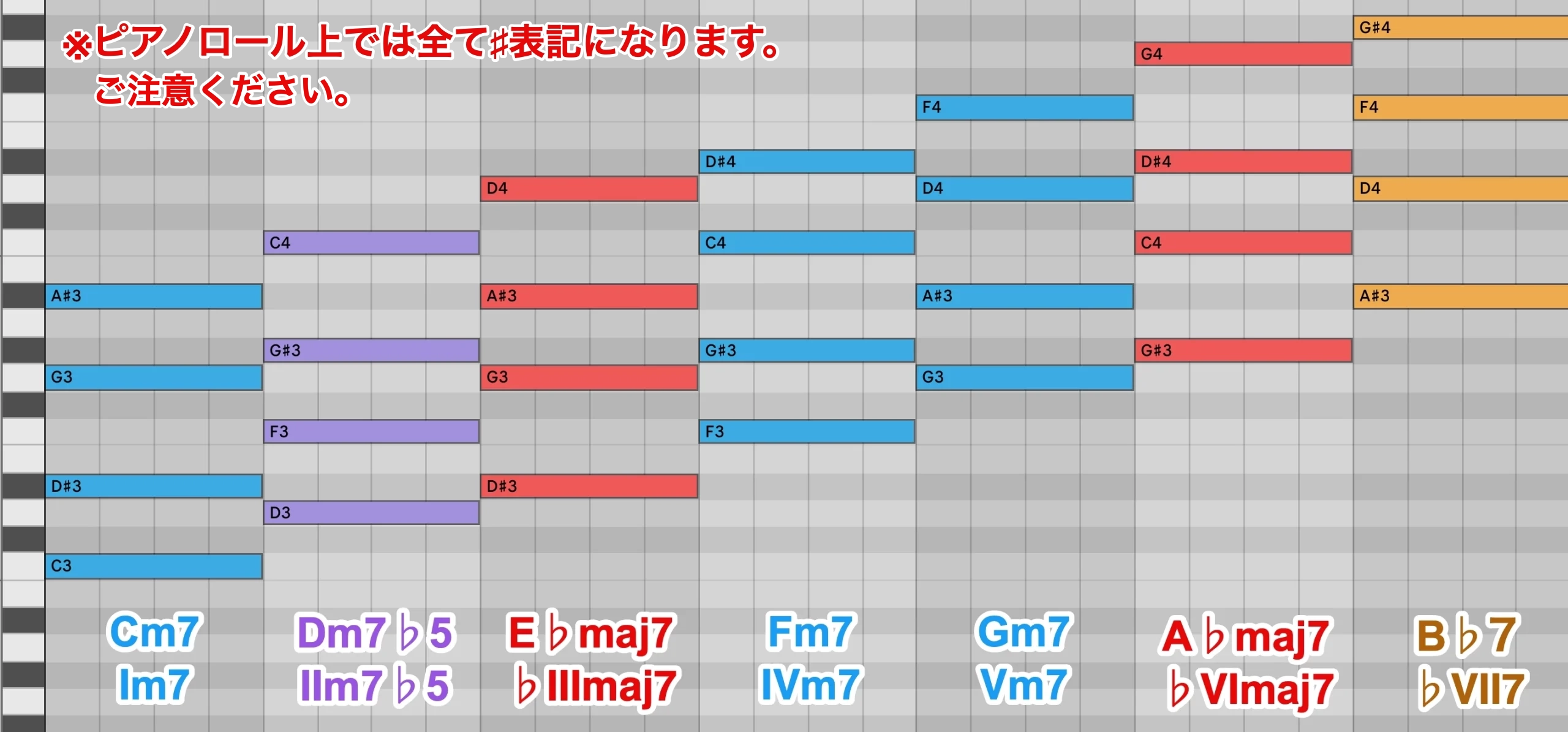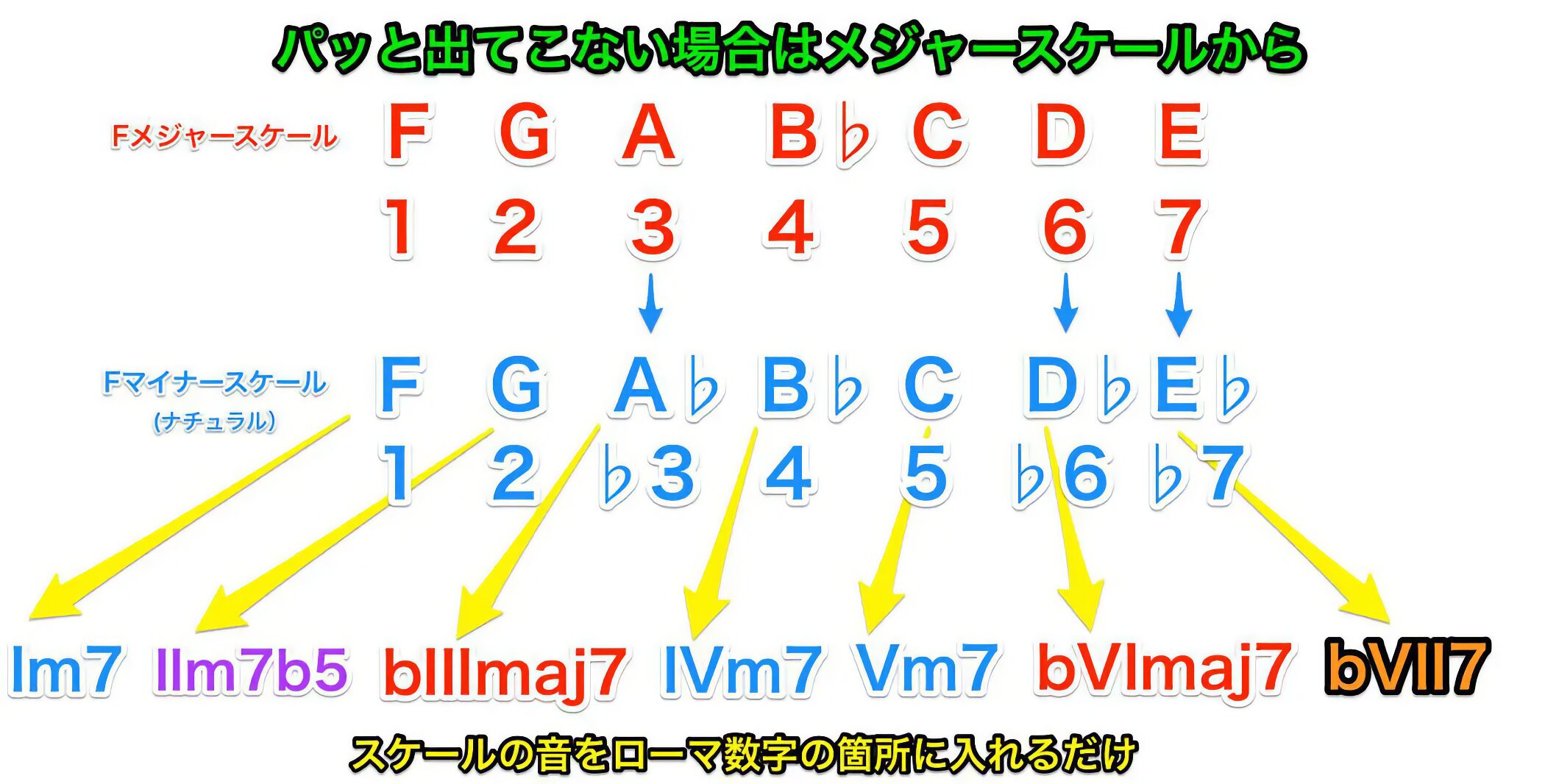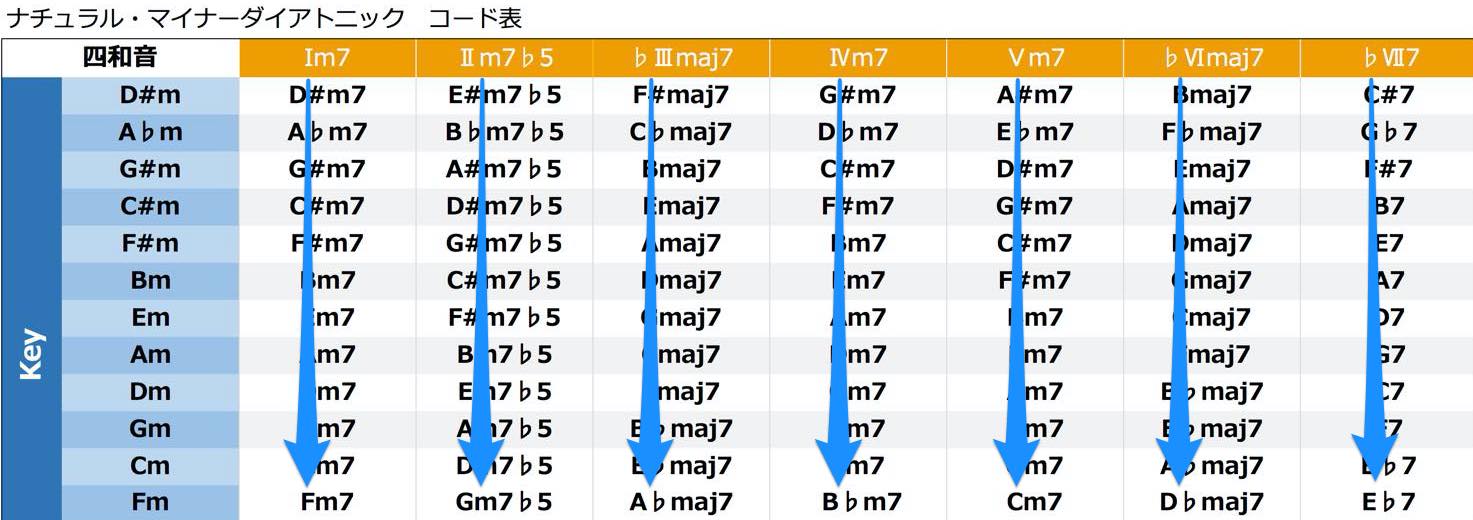ナチュラル・マイナーダイアトニックコードのディグリーネーム(4和音)/音楽理論講座
4和音のディグリーネーム(ナチュラル・マイナーダイアトニックコード)
今回は、前回の3和音に引き続き、4和音のディグリーネームを確認していきましょう。
楽曲を分析してみると、3和音/4和音両方出てくることが多いですので、ぜひマスターしましょう。
今回も、講座の21~26回あたりの内容と、前回の知識が不可欠になりますので、忘れた方は復習しておいてください。
解説に使用する表は、下記よりダウンロードが可能です。
学習にお役立ていただければ幸いです。
https://sleepfreaks-dtm.com/wordpress/music/Natural_Minor_Diatonic_Tetrad.zip
ダイアトニックコードの法則性は3和音と同じ
4和音のナチュラル・マイナーダイアトニックコードの一覧を見てみましょう。
3和音と同様に、これらをすべて暗記するのは大変です。
ですが、4和音にも3和音と同様の法則性があります。
スケールに沿って左から出来上がるコードの性質は同じという点がポイントですね。
このように、いずれも
マイナー・セブンス/マイナーセブンス・フラットファイブ/メジャー・セブンス/マイナー・セブンス/マイナー・セブンス/メジャーセブンス/ドミナント・セブンス
の並びになっています。
3和音と同様に、ピアノロール上であれば平行移動して簡単に作ることができます。
この法則性に注目し、各スケールの度数をローマ数字に置き換えて覚えましょう。
スケールに沿ってローマ数字を振る
スケールの始まりの音から順番にローマ数字を振っていきます。
Cナチュラル・マイナーで進めてみましょう。
ディグリーネームは、以下の通りとなります。
♭が付かない表記がされているものもありますが、当講座では前回と同様に、他のスケールやダイアトニックコードとの違いの意識、また後々学ぶテクニックのために「♭」をつけて進めていきます。
ここからダイアトニックコードを作りましょう。
手順は46回目に掲載したとおりです。
あわせて、ローマ数字の隣に各コードの性質を付記していきます。
完成です。
このローマ数字の箇所に各ナチュラル・マイナースケールの音を入れるだけで、ナチュラル・マイナーのダイアトニックコード(4和音)を網羅できるということになります。
ディグリーネームの記述法は、メジャーの横に「△」をつけたり、マイナーは小文字(「ⅲ」等)で示すなど、様々な表記法があります。本講座では上記の記述で統一します。
ちなみに、それぞれの名称は以下のとおりです。
- Im7 = ワン・マイナー・セブンス
- IIm7b5 = トゥー・マイナーセブンス・フラットファイブ
- bIIImaj7= フラット・スリー・メジャーセブンス
- IVm7 = フォー・マイナー・セブンス
- Vm7 = ファイブ・マイナー・セブンス
- bVImaj7 = フラット・シックス・メジャーセブンス
- bVII7 = フラット・セブン・セブンス(ドミナント・セブンス)
ディグリーネームの活用
メジャーの際と同様に、制作している曲や分析したコード進行を別のマイナー・キーで試したい場合は、ディグリーネームが役立ちます。
Fmで試してみましょう。
Fナチュラル・マイナースケールがすぐに思い浮かばない場合は、Fメジャースケールから考えて、3,6,7を♭させると良いです。
あとは、スケールの音をディグリーネームのローマ数字の箇所に当てはめるだけで、キーの変更にもすぐに対応できます。
最後に、ローマ数字表記ありのナチュラル・マイナーダイアトニックコード(4和音)一覧表を載せておきます。
ぜひ、ご利用ください(リンク先を保存で大きいファイルを取得できます。)
次回は、マイナーダイアトニックコードを使った曲作りに向けた準備に入っていきます。
また、他のマイナースケールがある理由にも迫っていきますので、ご期待ください。






